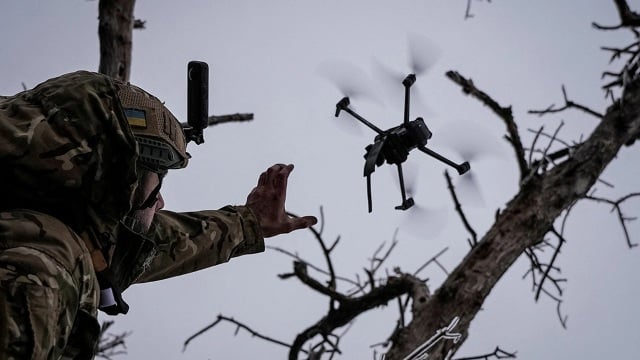GHANA ARMED FORCES BRIEFING PAPER
Issued: June 2025
Prepared for: Commanders, Staff Officers, Cadets, and Policy Planners
Executive Summary
The global evolution of unmanned aerial vehicles (UAVs), or drones, has disrupted conventional military thinking. Drone warfare now dictates the tempo and structure of modern combat—from state-versus-state warfare to insurgent ambushes. This paper analyzes global case studies and connects their lessons to Ghana’s strategic environment. It recommends doctrine innovation, capability acquisition, and interagency partnerships to ensure readiness in this fast-evolving domain.
1. Global Trends: The New Airpower Disruptors
A. Precision from Poverty: The Economics of Asymmetry
Iran’s 2025 missile-drone assault on Israel exposed a critical vulnerability: even state-of-the-art systems like the Iron Dome can be saturated by large swarms of low-cost UAVs. In Ukraine, handheld drones costing under $1,000 altered artillery targeting and battlefield awareness, producing outsized tactical impact.
B. Tactical Innovation through Improvisation
Ukraine and non-state actors have employed consumer-grade UAVs in novel ways—delivering grenades, marking targets with infrared strobes, and providing real-time targeting data. Azerbaijan’s 2020 use of loitering munitions (kamikaze drones) demonstrated how drone-led campaigns can neutralize armored formations and static defenses.
2. Strategic Implications for Ghana’s Defense Posture
Ghana faces evolving threats: transnational criminal networks, border incursions, extremism in the Sahel, and maritime insecurity. Drones represent both a force multiplier and a vulnerability.
Key Opportunity Areas:
Northern Border Surveillance: Use of fixed-wing and rotary-wing drones for day-night ISR across Volta, Oti, and Upper East regions. Maritime Domain Awareness: Deploy UAVs along the Gulf of Guinea to track piracy, illegal fishing, and maritime trafficking. Internal Security & Crisis Response: Drones offer rapid visual intelligence for riot control, natural disasters, and counterterrorist responses in urban or forested terrain. Peacekeeping Deployment: UAVs can assist Ghanaian forces in high-risk UN operations, enhancing situational awareness and troop safety.
3. Training, Doctrine, and Officer Preparedness
A. Curriculum Integration
Introduce mandatory drone theory and counter-UAV warfare modules at the Ghana Military Academy and Ghana Armed Forces Command and Staff College. Use red-teaming exercises to train officers in asymmetric adversary drone strategies.
B. Institutional Doctrine Development
Draft and promulgate a GAF Unmanned Systems Operations Doctrine applicable to joint, expeditionary, and civil support missions. Integrate electronic warfare and anti-drone defense into field manuals and standing operational procedures (SOPs).
4. National Innovation and Industrial Development
A. Local Design and Production
Collaborate with KNUST, University of Ghana, and local tech incubators to design rugged drones optimized for Ghanaian terrain (heat-resilient, dust-sealed, long-endurance).
B. Interagency and Policy Collaboration
Work with the Ghana Civil Aviation Authority and Ministry of Communications to develop UAV regulation and secure airspace corridors. Establish a Defense Innovation Unit for Drone & Robotics Systems under the Ministry of Defence.
5. Strategic Recommendations
Short-Term (0–2 Years): Launch a GAF Drone Research Task Force, procure off-the-shelf ISR drones, begin counter-drone pilot programs. Medium-Term (3–5 Years): Operationalize a dedicated Drone Warfare Command. Develop Ghana-specific counter-swarm tactics. Long-Term (6–10 Years): Position Ghana as a regional UAV training and manufacturing hub. Support ECOWAS-wide drone doctrine standardization.
The aerial battlefield is no longer owned by superpowers—it is open to innovation, improvisation, and strategic foresight. The Ghana Armed Forces must embrace drone warfare not just as a new capability, but as a transformative domain that influences all levels of military command, from tactical patrols to national defense strategy. Those who adapt, lead; those who lag, risk defeat.
Retired Senior Citizen
Teshie-Nungua
[email protected]


